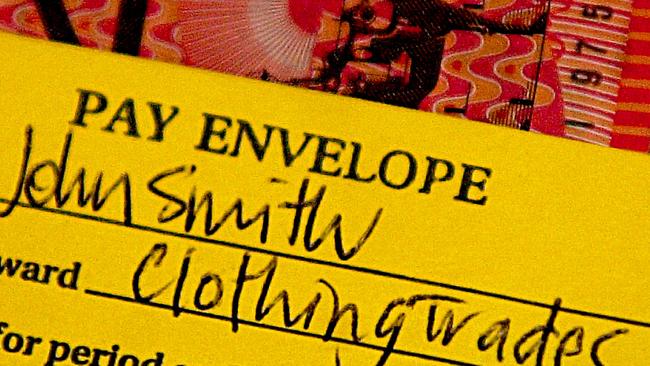Budget 2021: Wage stagnation despite surging GDP
Near-zero interest rates and $291bn in direct federal support will drive a strong recovery in spending and employment, but will do little to boost growth in wages.

Near-zero interest rates and $291bn in direct federal support will drive a strong recovery in spending and employment, but will do little to boost growth in wages or inflation into new territory over the budget period.
After contracting by 0.2 per cent last year, Treasury forecasts real GDP to increase by 1.25 per cent this financial year before surging off a weak base to 4.25 per cent in 2021-22.
“Australia’s economic engine is roaring back to life,” Josh Frydenberg said in his budget speech. But projected GDP growth in the three so-called “out years” will be, at most, an anaemic 2.5 per cent.
Population will stagnate due to the pandemic-induced border closures. After growing by 0.1 per cent this financial year, the population is assumed to increase by 0.2 per cent and 0.8 per cent in the following two years, with the latter period driven by 90,000 in net overseas migration, the Treasurer told The Australian.
Lowering the unemployment rate is Mr Frydenberg’s stated priority rather than budget repair, a task delayed until the labour market revival is secured. In June next year, the jobless rate is expected to be 5 per cent, then drifting lower, although employment growth of a mere 1 per cent is expected in each of the next two financial years.
“The unemployment rate is forecast to fall to 4.75 per cent by mid-2023,” Treasury says in the budget papers. “This would mark the first sustained period of unemployment below 5 per cent since before the Global Financial Crisis, and only the second time since the early 1970s.”
The picture is in line with the Reserve Bank’s forecasts contained in the Statement of Monetary Policy, issued on Friday.
A stronger labour market, however, is not expected to translate into significantly higher wages growth. The wage price index is estimated to rise by 1.25 per cent in the year to June, and by 1.5 per cent a year later, a poor outcome given annual pay growth hit 1.8 per cent in the middle of the pandemic.
Household spending is expected to expand by a swift 5.5 per cent next financial year and by 4 per cent the following year, helped by the vast amount of savings accumulated by families over the past 12 months.
“The solid outlook for growth reflects strong household balance sheets and improving labour market conditions,” Treasury says.
“Household balance sheets have been strengthened by the government’s fiscal policy support, high saving rates during most of 2020, and increased asset prices, including the recent growth in housing prices. Growth in household spending will be further supported by the continued easing of restrictions and robust consumer confidence.”
Business investment, which had been in a pre-pandemic hole, has recovered in line with the broad economic story.
After falling by 5 per cent this financial year, business capital spending is expected to rise by 1.5 per cent in 2021-22. But Treasury estimates that a 10 per cent increase in investment looms the year after that.
“Record business conditions, improvements in business confidence, the strong rebound in economic activity and the extension of business tax incentives are expected to bring forward activity and underpin a significant recovery in investment in coming years,” Treasury notes.
Another weak point is the external sector, which is expected to detract from growth in coming years: “Net exports (exports minus imports) are forecast to detract from economic growth in coming years, driven by increasing import activity, particularly tourism services imports.”




To join the conversation, please log in. Don't have an account? Register
Join the conversation, you are commenting as Logout